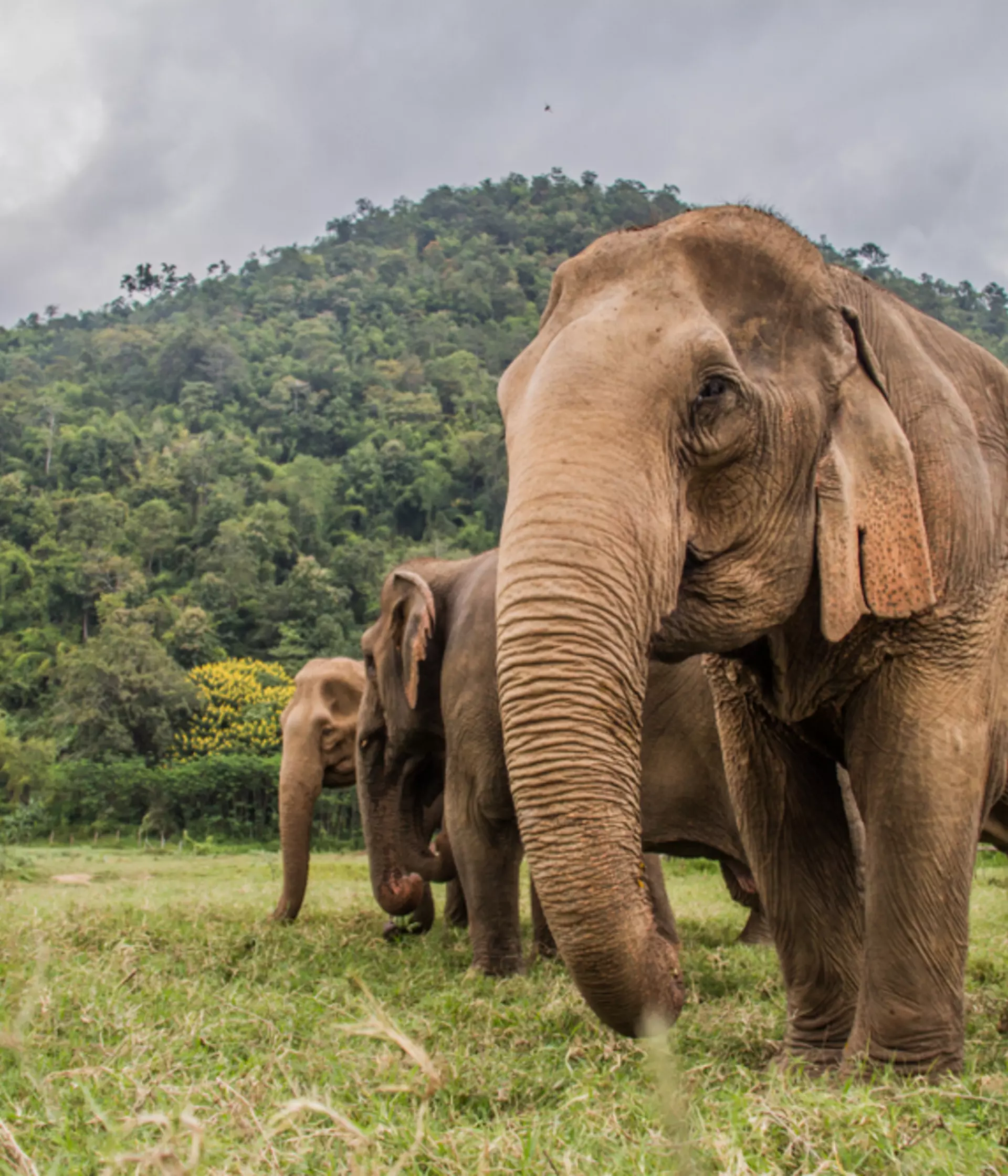Big zoo, big conservation!
When you have a big day out at Whipsnade Zoo, you’re helping animals around the world – in a big way! We are more than a zoo, we are part of ZSL (Zoological Society of London) a global conservation charity. We have teams of scientists, conservationists,rangers and community workers around the world helping to protect species and restore their habitats with vital wildlife conservation work.
Whipsnade Zoo is a hub of conservation activity, from our crucial breeding programmes for endangered wildlife like the scimitar-horned oryx to native species conservation on our 600-acre site.
Zoo conservation success stories
Explore our important conservation work at the Zoo and how you can support us.
Freshwater fish conservation
Our aquarium is a hub for global conservation, as we recover some of the most endangered fish species in the world.
Native wildlife conservation
Our White Lion chalk grassland at the Zoo is a Site of Special Scientific Interest (SSSi), being an example of a rare and important habitat in Britain.
Scimitar-horned Oryx introductions
Restoring the scimitar-horned to its historical range in the 78,000km² Ouadi Rimé-Ouadi Achim Game Reserve in central Chad.
Whipsnade Zoo conservation breeding
Our breeding programme provides an important resource to ZSL’s conservation work through the management of populations of threatened species in our zoos and, where appropriate, to use some of these to re-establish populations in the wild.
Whipsnade Zoo’s role in global conservation
Be sure to visit our elephants – if they’re not outside enjoying their 30 acre outdoor habitat, you’ll find them in the centre for elephant care. Our elephant herd has been contributing to a cutting-edge conservation initiative, giving researchers the chance to understand and capture elephant heat-signatures. These unique signatures can help automatic detection systems in the wild ‘see’ elephants quickly and accurately. A timely warning to nearby villages that elephants are headed their way reduces the risk of elephants and people coming into conflict, protecting both people and wildlife. This is just one of the ways that Whipsnade Zoo plays a role in protecting species and supporting those living with wildlife.
Conservation zoos have the power to reverse biodiversity loss. In April 2023, we were part of the largest wild release of Extinct-in-the-Wild Partula snails in history! Thousands of snails reared at zoos, including London Zoo and Whipsnade Zoo, were returned to the islands of Moorea and Tahiti - almost 30 years after they were wiped out by a human-introduced invasive species.
Protecting elephants in the wild
Elephant conservation at Whipsnade Zoo
Over a two year period we took more than 30,000 thermal images of the elephants at Whipsnade Zoo for this ground-breaking conservation initiative to help people live alongside elephants.
Is Whipsnade Zoo a good zoo?
Whipsnade Zoo is the ‘big sister’ of London Zoo, which was founded in 1828 to advance understanding of the natural world – London was the world’s first scientific zoo. Just over 100 years later, in 1931, Whipsnade Zoo – the first ‘open zoo’ in Europe, welcomed its first visitors. Built on the same premise as London – that understanding and appreciating the natural world is crucial – Whipsnade gave visitors the chance to see large, majestic animals in vast habitats – just as our visitors still enjoy today.
Within 30 years of Whipsnade opening, the scale of global wildlife decline was becoming apparent and ZSL’s focus shifted to conservation. Combining our scientific origins with conservation gave us a powerful approach to protecting wildlife and habitats. Whipsnade is a leading conservation zoo that offers visitors an adventurous brush with nature, inspiring a lifelong love of animals and – we hope – the conservationists of tomorrow.
Zoo Conservation – how do zoo animals help conservation?
Whipsnade Zoo gives people the chance to see amazing animals in amazing spaces, and to learn about their lives here and in the wild.
Many of the animals cared for at Whipsnade Zoo – and at London Zoo – are crucial to the future of their species. We lead international breeding programmes which help protect the genetic health and diversity of species through an ongoing collaboration with leading zoos across Europe.
Many of the species at the zoo are critically endangered or extinct in the wild, so breeding is important to their future survival. Where possible we also work to release animals back into the wild. Some of our release successes include corncrakes and scimitar horned oryx.
In our freshwater aquarium you are surrounded by conservation in action – it’s the world’s only freshwater conservation aquarium. Freshwater makes up just 1 per cent of the planet, but sustains 10 per cent of the world’s biodiversity.
A ZSL Conservation Zoo
Here are just a few of the many examples of how our zoo experts, our scientists and our conservationists work together to find solutions to protect critically endangered species, restore habitats and help wildlife thrive.
How can I support ZSL?
Support Us
There are lots of ways to help protect wildlife and restore the diversity of life. Just a little bit of support can make real change for the world. Find out how you can support our work.
